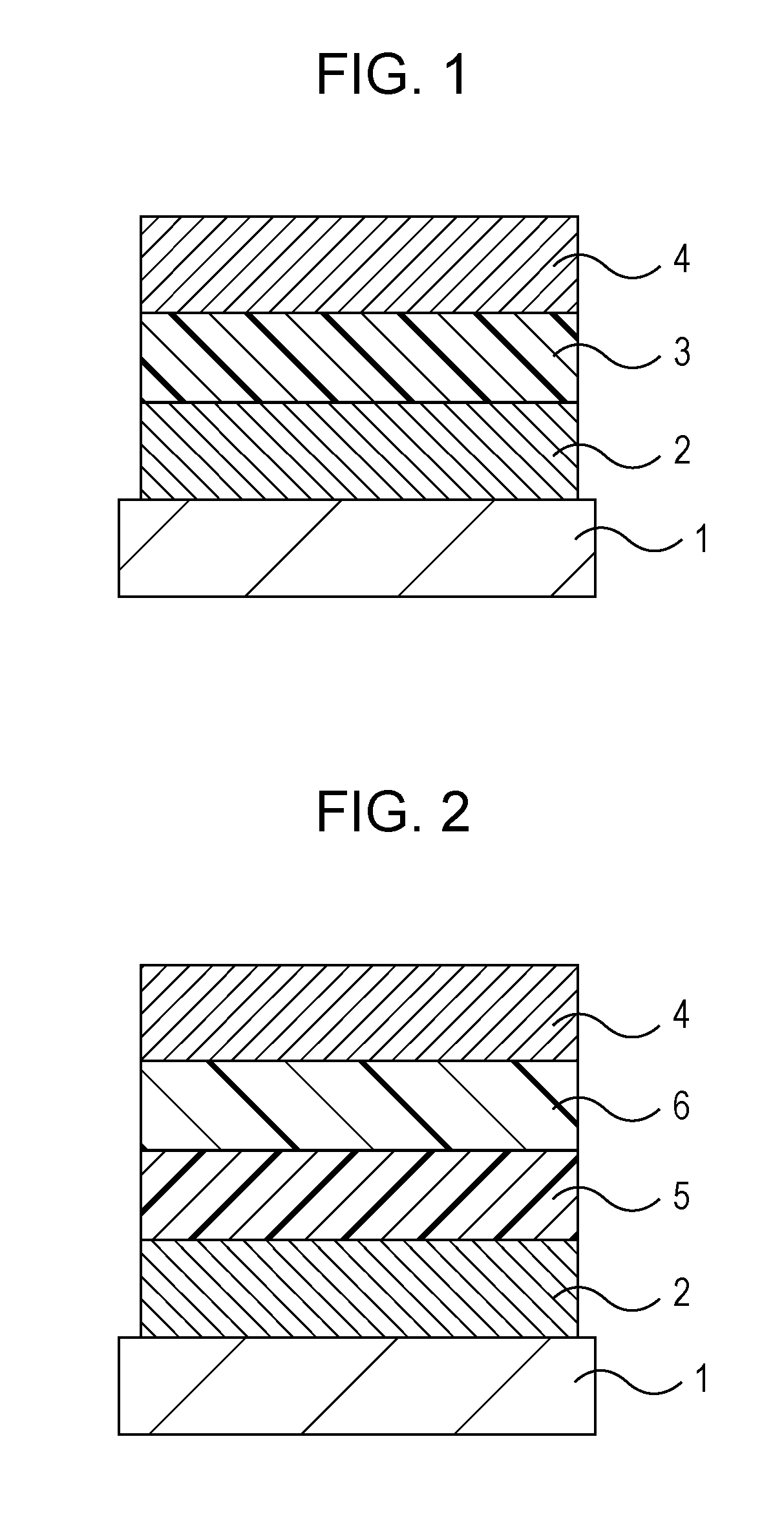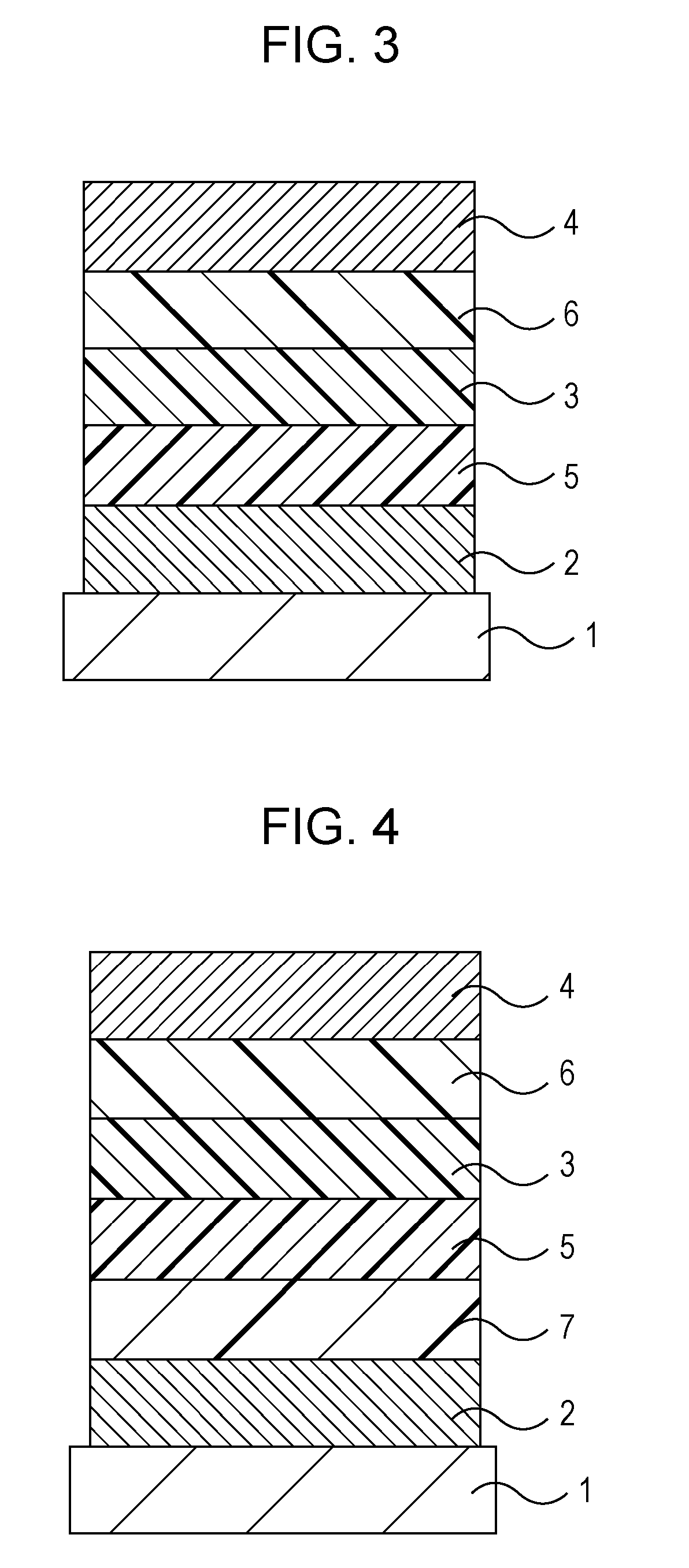Amino compound for organic light-emitting device and organic light-emitting device including the same
a technology of organic light-emitting devices and amino compounds, which is applied in the direction of discharge tube luminescnet screens, natural mineral layered products, etc., can solve the problems of difficult selection of host compounds in devices requiring a relatively wide band gap, many problems for conventional organic light-emitting devices in terms of durability, and low efficiency, etc., to achieve high tg, high mobility, and high efficiency
- Summary
- Abstract
- Description
- Claims
- Application Information
AI Technical Summary
Benefits of technology
Problems solved by technology
Method used
Image
Examples
example 1
[0076]
Synthesis of Exemplified Compound H-16
[0077]First, 0.79 g (3 mmol) of 3,5-dibromo-4-methylaniline and 2.14 g (9 mmol) of Compound 1-1 were dissolved in a mixed solution of 20 mL of toluene, 10 mL of ethanol, and 20 mL of an aqueous solution (2 mol / L) of cesium carbonate. Subsequently, 0.17 g (0.15 mmol) of tetrakis(triphenylphosphine)palladium (0) was added to the solution in a nitrogen atmosphere at room temperature under stirring. Stirring was performed for three hours while the reaction system was refluxed at the boiling point. After the reaction, the organic layer was extracted with toluene and dried over anhydrous sodium sulfate. The product was then purified with a silica gel column (using a mixture of heptane and toluene as a developing solvent) to obtain 1.11 g of Compound 1-2 (yield 75.4%).
[0078]Subsequently, 0.98 g (2 mmol) of Compound 1-2, 1.39 g (6 mmol) of Compound 1-3, and 0.48 g (5 mmol) of sodium tert-butoxide were dissolved in 50 mL of xylene. In a nitrogen at...
examples 2 to 15
[0080]Synthesis of Exemplified Compounds H-2, H-5, H-11, H-17, H-50, H-53, H-65, H-68, H-71, H-77, H-86, H-125, H-128, and H-131
[0081]The title compounds could be synthesized as in Example 1 using boronic acid compounds and halogen compounds shown in Table 1 instead of Compounds 1-1 and 1-3.
TABLE 1ExemplifiedExampleCompoundBoronic acid compoundHalogen compound2H-23H-54H-115H-176H-507H-538H-659H-6810H-7111H-7712H-8613H-12514H-12815H-131
example 16
[0082]
Synthesis of Exemplified Compound H-153
[0083]First, 1.0 g (2.04 mmol) of Compound 1-2 prepared as in Example 1, 0.97 g (6.12 mmol) of 2-bromopyridine, and 0.68 g (6.0 mmol) of potassium tert-butoxide were dissolved in 18 mL of 1,4-dioxane. In a nitrogen atmosphere at room temperature under stirring, 46 mg (0.1 mmol) of 1,3-bis(2,6-diisopropylphenyl)imidazole chloride (IPr—HCl) was added to the solution, and 30 mg (0.1 mmol) of palladium dibenzylideneacetone was then added thereto. The temperature of the reaction solution was increased to 100° C., and the solution was stirred for three hours. After the reaction, the organic layer was extracted with toluene and dried over anhydrous sodium sulfate. The product was then purified with a silica gel column (using a mixture of heptane and toluene as a developing solvent) to obtain 460 mg of Exemplified Compound H-153 (yield 35%). The structure of this compound was confirmed by NMR.
PUM
| Property | Measurement | Unit |
|---|---|---|
| temperature | aaaaa | aaaaa |
| thickness | aaaaa | aaaaa |
| thickness | aaaaa | aaaaa |
Abstract
Description
Claims
Application Information
 Login to View More
Login to View More - R&D
- Intellectual Property
- Life Sciences
- Materials
- Tech Scout
- Unparalleled Data Quality
- Higher Quality Content
- 60% Fewer Hallucinations
Browse by: Latest US Patents, China's latest patents, Technical Efficacy Thesaurus, Application Domain, Technology Topic, Popular Technical Reports.
© 2025 PatSnap. All rights reserved.Legal|Privacy policy|Modern Slavery Act Transparency Statement|Sitemap|About US| Contact US: help@patsnap.com



